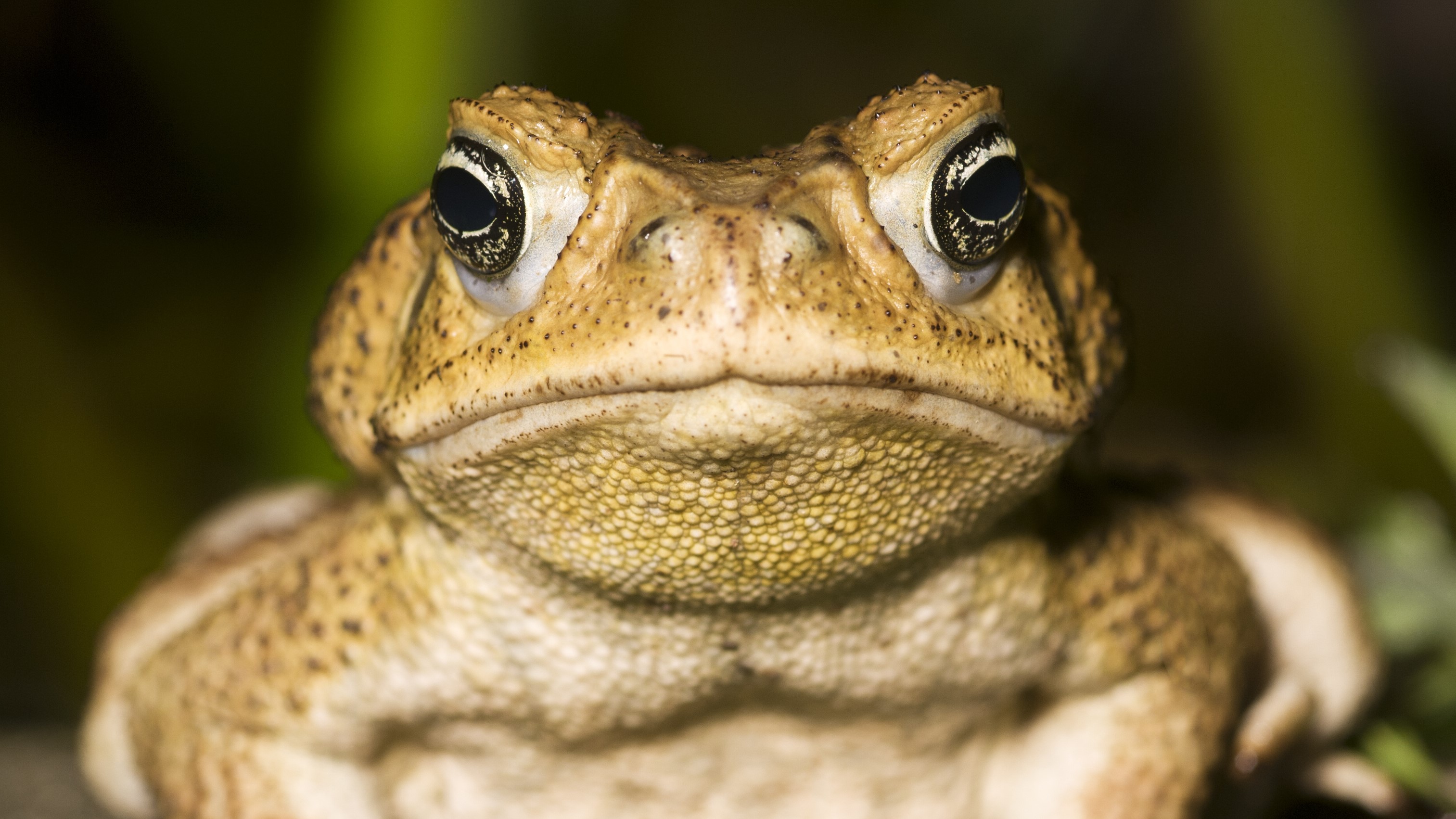
Australia is about to embark on a massive annual cane toad killing spree — known as the Great Cane Toad Bust — to put a dent in the numbers of this invasive pest. Now, scientists are proposing a humane method to purge the toxic toads.
Instead of bludgeoning cane toads (Rhinella marina, formerly Bufo marinus) with cricket bats and golf clubs, or poisoning them with harsh chemicals, scientists advise bagging the toads and sticking them in the fridge. The cold puts the amphibians into a state of torpor and shuts their pain receptors off. People can then transfer the toads to the freezer to finish them off humanely, said Rick Shine, a professor of biology at Macquarie University in Sydney, Australia.
"As a toad cools, its metabolism slows down and it becomes very inactive," Shine told Live Science in an email. "Even its brain shuts down. So a cold toad doesn't feel pain, and the toad never knows what is going on — it just falls asleep and never wakes up."
Cane toads naturally experience temperatures dropping at night, so their bodies don't go into shock when they are initially put in the fridge, Shine said. In a 2015 study, Shine and his colleagues found that the toad's brain activity declined smoothly during freezing and produced no detectable pain signals. By the time ice crystals start to form in a toad's tissues, "it's not aware of anything," he said.
Scientists introduced cane toads from Hawaii to Queensland, Australia, in 1935 to exterminate cane beetles (Dermolepida albohirtum) that were ravaging newly planted sugarcane crops. However, this effort backfired, because cane toads showed no interest in the beetles and multiplied uncontrollably. The toads, which secrete venom that can kill animals that eat them, spread to coastal New South Wales, the Northern Territory and parts of northwestern Australia. Everywhere they went, they triggered declines in native predators and caused damage to ecosystems.
Related: 'Monster cane toad' dubbed 'Toadzilla' found in Australia
Cane toads still wreak havoc today, prompting the environmental non-profit Watergum to organize the Great Cane Toad Bust, an annual campaign to kill as many toads as possible in a week. This year's kill-athon — the third nationwide bust and the first to target tadpoles as well as adult toads — will take place between Jan. 13 and Jan. 21.
"The Great Cane Toad Bust is Australia's biggest toad bust," Nikki Tomsett, Watergum's invasive species project officer, told Live Science in an email. "It's all about taking collective action to effectively and humanely control cane toads, which are an invasive pest species in Australia."
The campaign has been successful so far, with people removing over 50,000 cane toads from their local environment in a single week, Tomsett said. "This year we're aiming to beat that record," she said.
Cane toads can live for more than 10 years in the wild, Tomsett said. Female toads produce as many as 35,000 eggs every time they breed, which means every toad matters when it comes to toad busting.
The cool-and-freeze method "is currently considered best practice for the humane euthanasia of cane toads," Tomsett said. "Blunt force trauma and most chemical applications are not considered humane, and pose a threat to wildlife and pets, as cane toads euthanized in this way are typically left in the environment and are still toxic after death."
People who club the toads to death also risk hitting the poison glands, which can cause temporary blindness in humans if it gets into the eyes," ABC News reported.
Australians are encouraged to keep busting cane toads after Jan. 21, Tomsett added.







